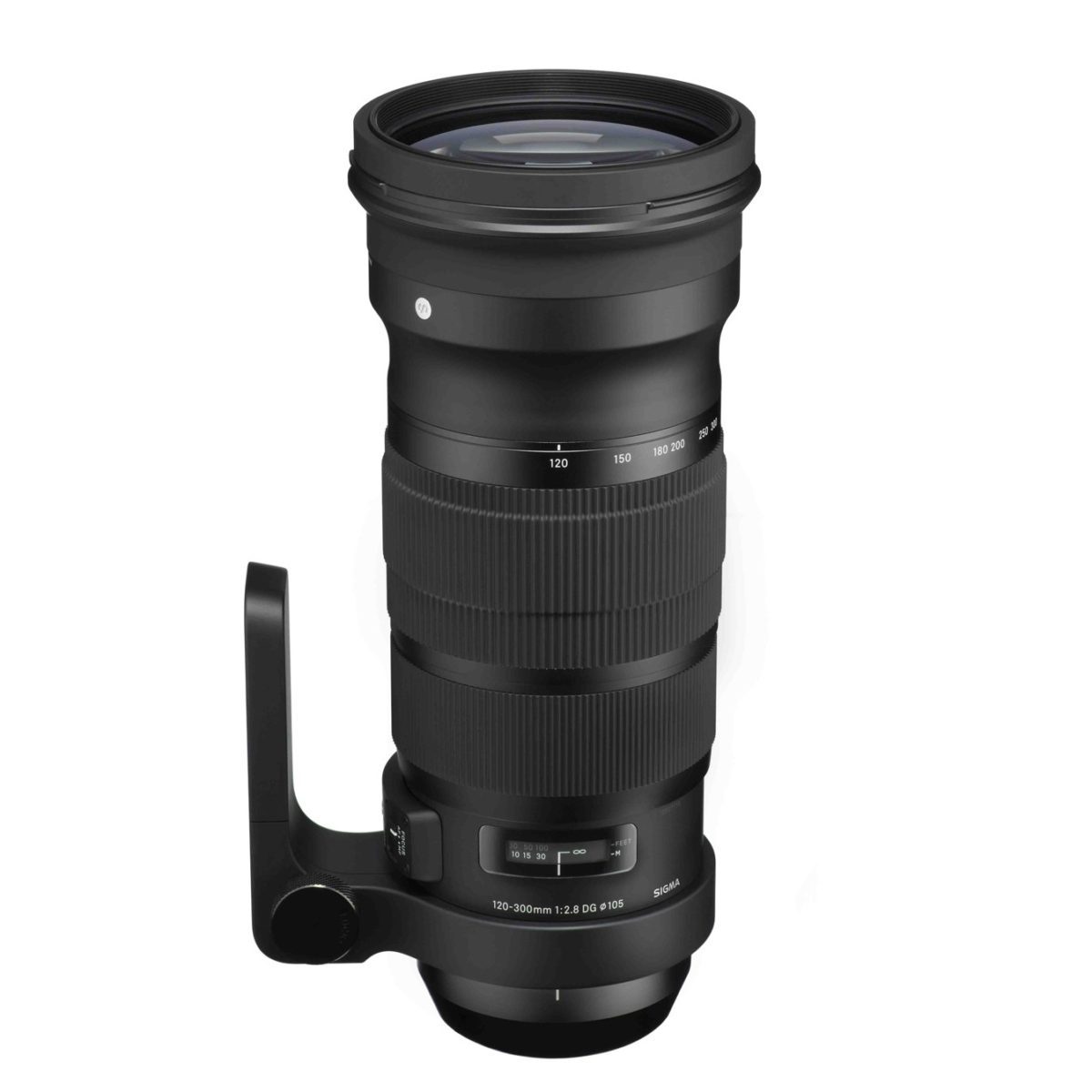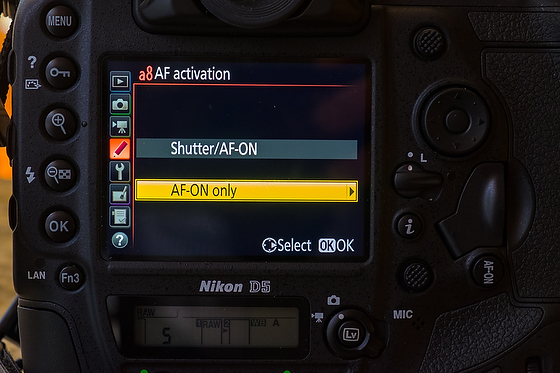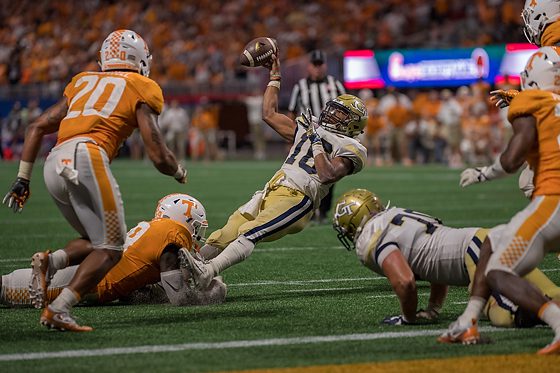
Between the photographer and the subject, the camera and lens combination will give the photographer the ability to capture what they desire or fail.
When I started shooting football in 1983 at East Carolina University as part of the student newspaper and yearbook staff, I could not have gotten most of these photos due to the camera gear. I was shooting a Nikon FM-2 with either a Nikkor 80-200mm ƒ/4 or the Nikon 500mm ƒ/8 mirror lens.

I shot this photo of Georgia Tech playing Florida state with that Nikkor 500mm ƒ/8 mirror lens. If you look in the highlights, you can see those signature round halos. This was probably the best shot ever with that lens. But this was bright sunlight. I was shooting inside the Mercedes-Benz Stadium.
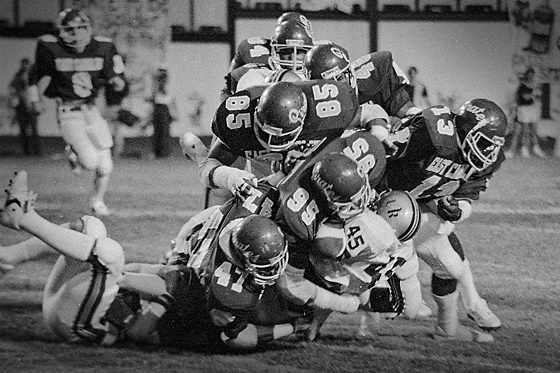
This was one of those images from 1983 when ECU played the University of Richmond. Compare those images to those from the Mercedes-Benz Dome of Alabama vs. Florida State and Georgia Tech vs. Tennessee.
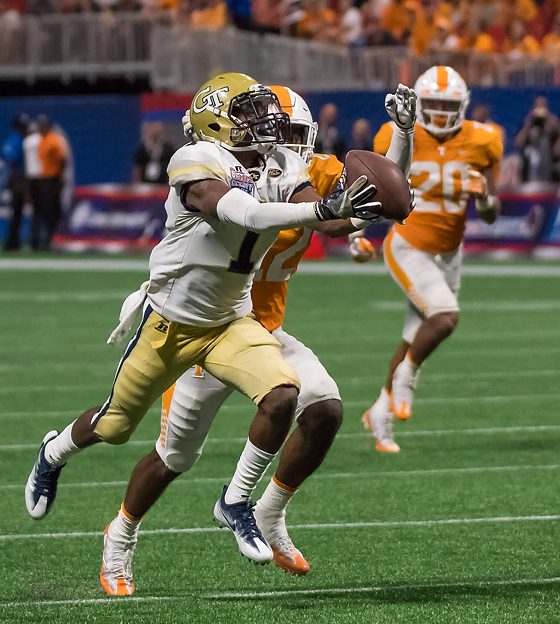
First of all, these images are far superior in so many ways. They are sharper, have better dynamic range, and have less noise [grain].

Back with film, I was never shooting above 1/500. This made my images less sharp. Shooting at 1/2000 or 1/4000 will make your images much sharper.
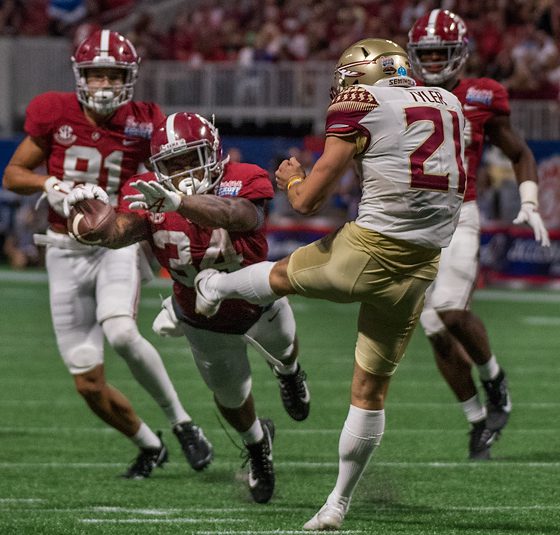
Here I got a series of images, and these are just two of that series of blocked punts I pulled for you here.
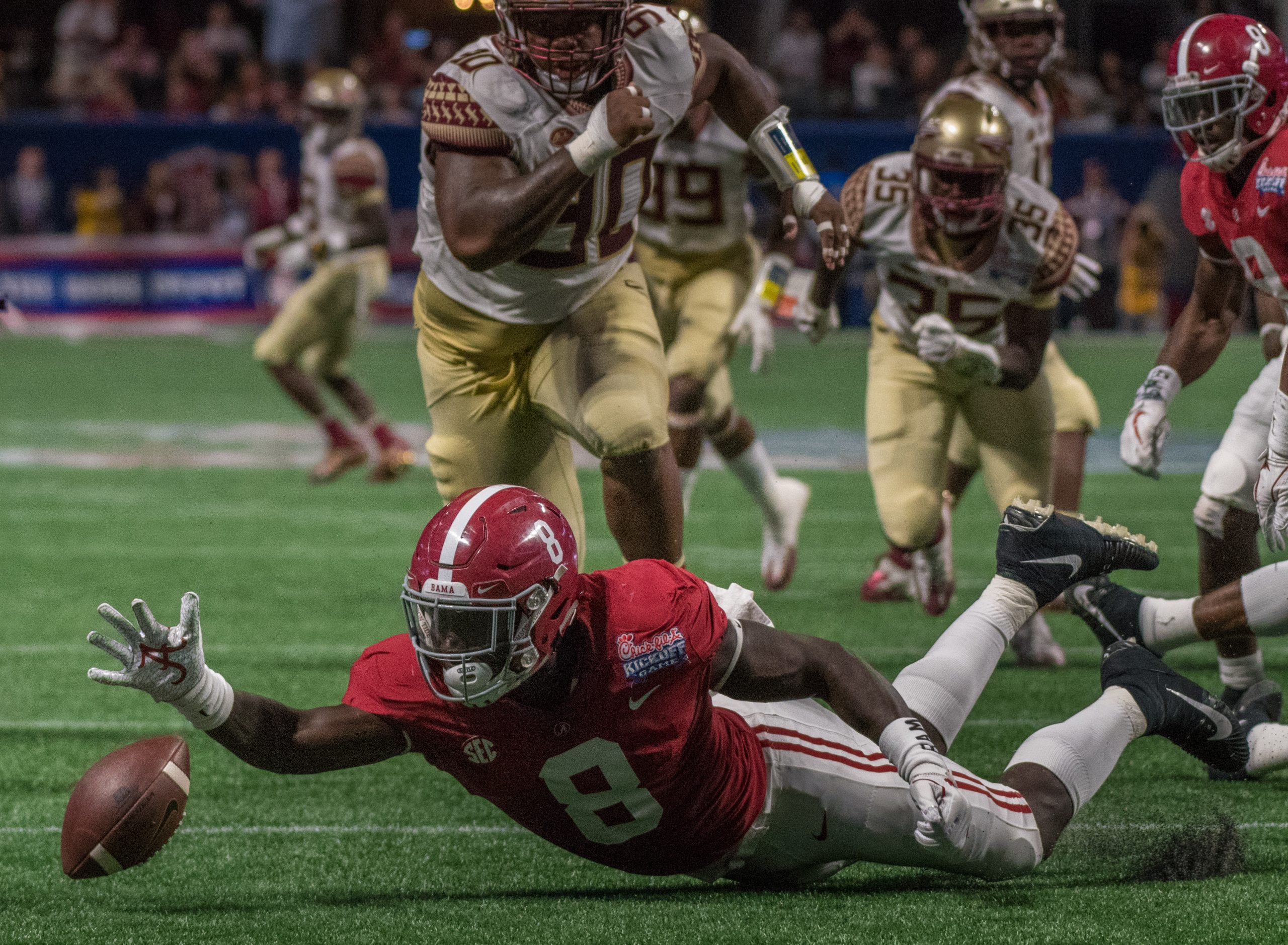
While I always say it is the photographer that makes the photo and not the camera, there are times that the camera will limit your abilities. For one, just getting the fast action in focus is quite tricky. The Sigma 120-300mm ƒ/2.8 S is so quick that I rarely have an out-of-focus photo during the game.
One of the greatest inventions was to separate the focus track from the shutter release. I push the back button to focus and use the shutter to fire the camera. Here is how that is set up.
In the menu Pencil selections pick AF Activation under the Autofocus settings.
In the menu Pencil selections, pick AF Activation under the Autofocus settings.
By changing these settings, you will notice the camera will stay in focus and shoot faster frame rate. Great for following a baseball player sliding into a plate and another player trying to tag them, or maybe a football player is running towards you to score. You will find more photos tack sharp in a series.
I generally put my focus point dead center and lock it, so I don’t bump it. I am trying to get photos of moving subjects, and off-center is too tricky. I may crop later for a better composition, but I want the subject to focus first.
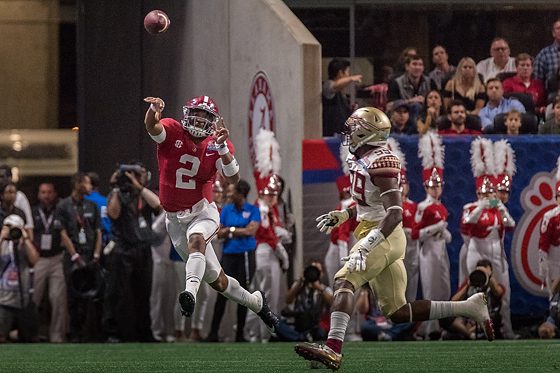
This action is happening quite a distance from me. I started tracking the quarterback and followed him in the play. Then when I thought I had three moments, I pressed the shutter release.
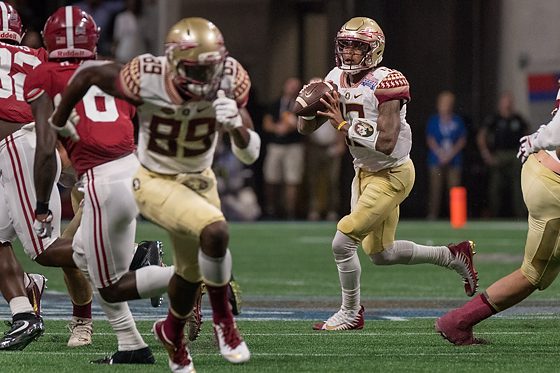
Here is the Sigma 120-300mm ƒ/2.8 lens:
Sigma 120-300mm ƒ/2.8 Sport
I also use teleconverters for the lens. I have the 1.4X and 2X converters.
Sigma 2x
Sigma 1.4x
The most significant difference that the Nikon D5 and Sigma 120-300mm ƒ/2.8 S make with my images is the quality. Usually, the Nikon FM-2 with the Nikkor 80-200mm or the 500mm I was able to fire and get the first shot. I wasn’t able to get now 12 fps action after that. But the photos are now more focused, have better dynamic range, more accurate color, and lower noise at even ISO 102,400 than I was getting with ISO 1600 on film.
If you shoot sports for a living, I recommend the Nikon D5. If this is a hobby or $6,500 is a little much, get the Nikon D500.

